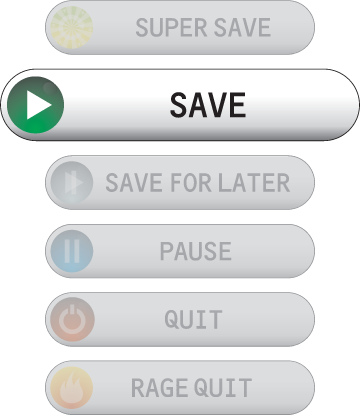The Tenth Line is a worthy addition to Steam’s library of RPGs, although the different things it does may not be up your alley.
Steam: Released
Developer: Sungazer Software
Publisher: Sungazer Software
Release date: March 17th, 2017
Genre: RPG
Type: Single-player
When you hear the words ‘indie’ and ‘RPG’ put together, you might imagine one of those default-asset RPG maker games that seem to crop up on Steam every week now. Even if those games are good when you play them, it’s understandable many don’t, since not making your game look genuinely unique can be a turn-off. It also makes the ones that do try that stand out more, such as the Tenth Line here – it looked like there was some clear effort behind it, and I was happy to see it lived up to that in the gameplay too.

The Tenth Line is the product of Sungazer Studios, and is intended to hearken back to the 32-Bit era of RPGS: stuff you’d see on the Playstation and maybe the SNES, basically. It does have that feel of a random RPG you might have rented in those days. A lot of them tried to do their own thing, just like the Tenth Line does. Quite a bit of its own thing.
Story:
The story stars the unnamed Princess of the tiny nation of Easania, who has just freed herself from a kidnapping, courtesy of a mysterious cult. While on the run from them, she encounters Rik, a kobold, and Tox, a black dragon, and persuades (bribes) them into helping her return. The dialogue in the game is pretty good, which I say coming off another RPG with fantastic dialogue, and the characters bounce off each-other in entertaining ways. One touch I liked was that when looking at items, each of them has a different reaction to each one: The Princess will wax romantically about an item called Skyborn Water, Tox will mention what it can be used for, and Rik will ask why they can’t just call it ‘rain’. There are also voiced lines during battle for all of them that are done surprisingly well.
Gameplay/Controls:
Between battles, unless you’re in town, you’ll generally be moving through dungeons, which are set up on a 2D plane and are sort of a mix between Paper Mario and the Lost Vikings. Each character has different ways of jumping and a unique ability. The Princess is strong enough to move rocks (yeah, I don’t get it either), Rik can throw rocks to knock certain objects down, and Tox can breathe out various elements depending on which items you use on him. You can’t progress between screens unless all three characters are present, and getting into battles far from the others will force you to fight without them for a turn or two while they catch up.

Items are the major progression of the game. There’s no equipment, and instead your character’s weapons gain levels at certain points – you need to use items to actually fill up those levels, though. When they level up in general meanwhile, you’ll have to place an item on a large board each character has, kind of like the Sphere Grid in Final Fantasy X. Each item has a certain pattern associated with it, and you can manipulate that to move around the board and gain what stat boosts you like, and eventually new attacks as well. It’s different, but I like it, although I tend to with things like this. If you don’t like moving through a lot of menus, you may not be a fan.

Battle is where the game gets really fun. Instead of each character having a turn, you get one where all three of them attack at once, and in whatever order you like. This means you can have, say, Tox attack the front column with one of his skills if you’re confident it will get rid of them, freeing up room for The Princes and Rik to hit the people behind. There’s no direct healing, and you’re limited by cooldowns and what SP you have available, which means you can’t sleepwalk through battles like in other RPGs. SP recharges based on how well you do every turn, and you can skip a character’s turn to recover some, meaning in some situations it’s better to wait.

Graphics:
They’re nice enough, and like I said do capture the feeling of a classic, original RPG. But they do lean more toward the SNES than something you’d find on the Playstation; some animations are a bit choppy, specifically on the overworld. The talking portraits for characters are quite well-drawn, though, and I like the UI, it’s all quite lively.

Music:
So far this is one area they didn’t quite excel in. None of the tracks have been bad, but they’re more about softer stuff with string and key instruments instead of anything really heavy. That’s fine for towns or dungeons, but battles can be a bit dull. You can do memorable battle songs with those kinds of instruments, like in Dragon Quest, but it didn’t quite manage that.
For this review the developer asked me to stay mum on any major story beats, but everything I’ve seen looks very interesting. The Tenth Line refers to the end of a prophecy supposedly predicting the end of the world, and I can imagine a lot of possible twists there. I’m quite enjoying the game so far, and at ten dollars it won’t break your budget either.
RATING:

(click on the image to see the rating explanation)










